I need to implement an RMS calculations of sine wave in MCU (microcontroller, resource constrained). MCU lacks FPU (floating point unit), so I would prefer to stay in integer realm. Captures are discrete via 10 bit ADC.
Looking for a solution, I've found this great solution here by Edgar Bonet: https://stackoverflow.com/a/28812301/8264292
Seems like it completely suits my needs. But I have some questions.
- Input are mains 230 VAC, 50 Hz. It's transformed & offset by hardware means to become 0-1V (peak to peak) sine wave which I can capture with ADC getting 0-1023 readings. Hardware are calibrated so that 260 VRMS (i.e. about -368:+368 peak to peak) input becomes 0-1V peak output. How can I "restore" back original wave RMS value providing I want to stay in integer realm too? Units can vary, mV will do fine also.
My first guess was subtracting 512 from the input sample (DC offset) and later doing this "magic" shift as in Edgar Bonet answer. But I've realized it's wrong because DC offset aren't fixed. Instead it's biased to start from 0V. I.e. 130 VAC input would produce 0-500 mV peak to peak output (not 250-750 mV which would've worked so far).
With real RMS to subtract the DC offset I need to subtract squared sum of samples from the sum of squares. Like in this formula:

So I've ended up with following function:
#define INITIAL 512
#define SAMPLES 1024
#define MAX_V 368UL // Maximum input peak in V ( 260*sqrt(2) )
/* K is defined based on equation, where 64 = 2^6,
* i.e. 6 bits to add to 10-bit ADC to make it 16-bit
* and double it for whole range in -peak to +peak
*/
#define K (MAX_V*64*2)
uint16_t rms_filter(uint16_t sample)
{
static int16_t rms = INITIAL;
static uint32_t sum_squares = 1UL * SAMPLES * INITIAL * INITIAL;
static uint32_t sum = 1UL * SAMPLES * INITIAL;
sum_squares -= sum_squares / SAMPLES;
sum_squares += (uint32_t) sample * sample;
sum -= sum / SAMPLES;
sum += sample;
if (rms == 0) rms = 1; /* do not divide by zero */
rms = (rms + (((sum_squares / SAMPLES) - (sum/SAMPLES)*(sum/SAMPLES)) / rms)) / 2;
return rms;
}
...
// Somewhere in a loop
getSample(&sample);
rms = rms_filter(sample);
...
// After getting at least N samples (SAMPLES * X?)
uint16_t vrms = (uint32_t)(rms*K) >> 16;
printf("Converted Vrms = %d V\r\n", vrms);
Does it looks fine? Or am I doing something wrong like this?
- How does SAMPLES (window size?) number relates to F (50Hz) and my ADC capture rate (samples per second)? I.e. how much real samples do I need to feed to rms_filter() before I can get real RMS value providing my capture speed are X sps? At least how to evaluate required minimum N of samples?